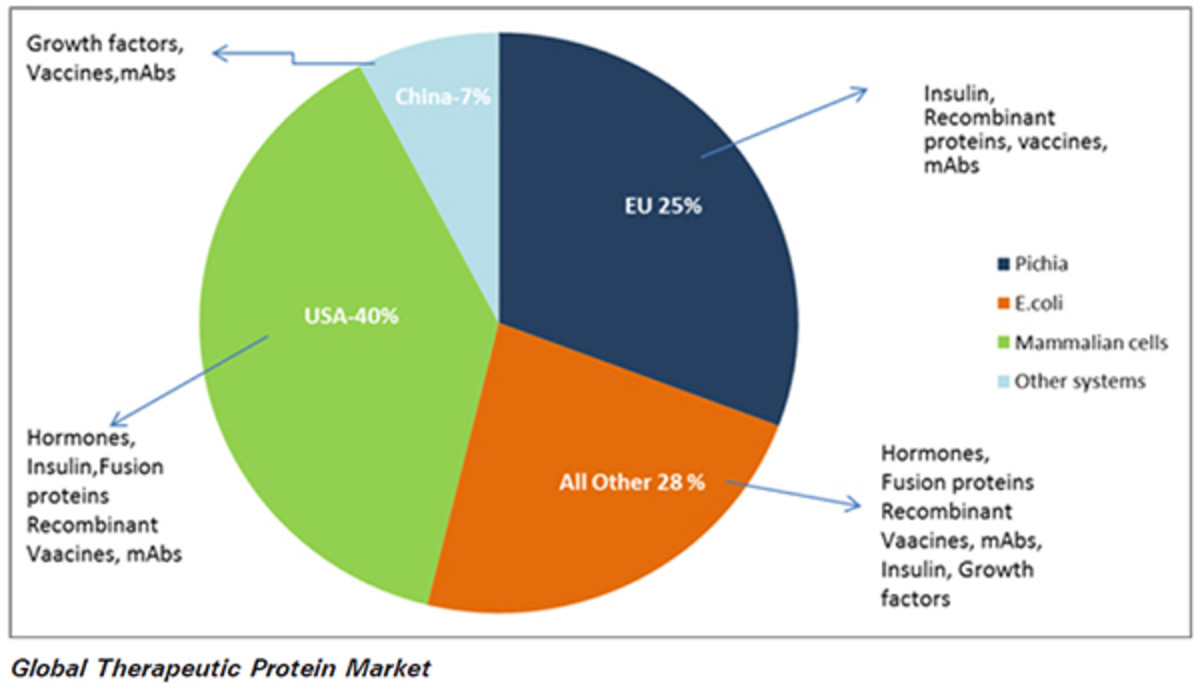How Biotech Changed The Medical World?
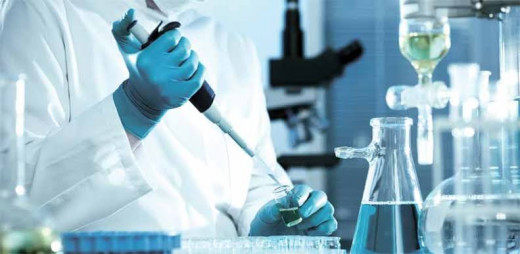
Hello, how are you? I hope everyone will be healthy and efficient. I believe that, perhaps you guys will also agree that every person earns money, status and respect for themselves. A person who can sacrifice his life for others and in the work of public welfare, no other person can have great power. Whenever the word public welfare resonates in my ears, only three people think in my mind like, hardworking soldiers of our various countries who protect their borders day and night, the other our farmers who are our food providers. In the end, doctors and scientists who are giving their precious time to treat their patients and do much research without any discrimination. But I will mention here some of the scientific methods which are related to biotechnology and which have completely changed the world of medical science. It is possible that some of you heard a lot about these new scientific inventions. But here we understand these inventions in detail. So let's start.
The recombinant DNA technological processes have made an immense impact in the area of healthcare by enabling the mass production of safe and more effective therapeutic drugs. Further, the recombinant therapeutics do not induce unwanted immunological responses as is common in the case of similar products isolated from non-human sources. At present, about 30 recombinant therapeutics have been approved for human use the world over. In India, 12 of these are presently being marketed.
Genetically Engineered Insulin:-
So as we know today, diabetes is not a simple disease. Those who think that this is a simple disease, then they should take a look at these facts for some time, around 422 million people worldwide suffer from diabetes, out of which this disease causes the death of 1.6 million people. So now you must have understood how serious this disease is. Well, I will not discuss this disease today. The cause of diabetes is the reduced or excessive secretion of the hormone called insulin from the pancreas. In fact, insulin converts the sugar in our blood into energy. Insulin is an effective tool to control this disease.
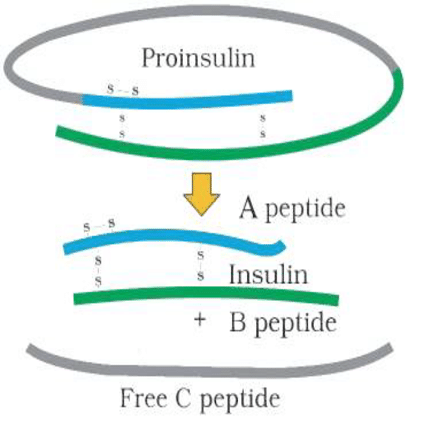
Now it takes a lot of hard work and effort to make insulin on a bigger scale. Now you think what would happen if insulin is not manufactured on such a large scale? In the old times, when new technologies do not come in the medical field, insulin was extracted from the pancreas of slaughtered Cattle and Pigs. Due to which many patients had to face allergies and many reactions. If we look at the molecular structure of insulin, then you will find that insulin is made up of two small polypeptide chains A and B, which are interconnected by disulphide bridges. Insulin is produced in mammals as a prohormone, which carries with it an extra stretch called a C peptide. As such, the C peptide is not found in mature insulin, which is subsequently removed due to biological reactions. In fact, the biggest challenge in producing insulin by rDNA technology was how to assemble insulin in matured form. The solution to this problem was discovered by an American company, Eli Lilly. In fact, they produced two such DNA sequences that were corresponding to A and B chains found in human insulin. These DNA sequences were then injected into the plasmid of E.coli to form insulin chains. Chains A and B are separately constructed and extracted, with the help of disulphide bonds, the chains were added, which led to the formation of insulin.

Gene Therapy:-
Gene therapy is actually a combination of several methods that allow us to identify the defected genes within any child or embryo and replace them with good genes. In this therapy, genes are inserted inside the patient's cells to cure a disease. Correction of a genetic defect involves the delivery of a normal gene into the individual or embryo to take over the function and compensate for the none functional gene.
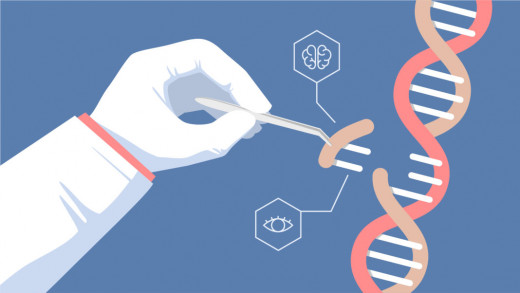
Gene therapy was first used in the 1990s in the treatment of ADA (adenosine deaminase) deficiency on a four-year-old girl by M. Blease and WF Andresco. Actually, the main reason for this disease is that due to some reason, the deletion of a gene that makes adenosine deaminase, which plays a major role in the body's immune system. In some children, bone marrow transplantation and enzyme replacement therapy are used to treat this disease. But this is not a complete cure for it. In gene therapy, firstly, lymphocytes are grown in a culture outside of the patient's blood in labs. This is followed by inserting a functional ADA cDNA (using a retroviral vector) into these lymphocytes and re-reaches the patient. But these cells are not immortal, due to which the patient needs periodic infusions of such genetically engineered lymphocytes. If we isolate the gene from bone marrow that produces ADA and insert it during the early embryonic stages, then it is a complete cure for this disease. With this method, we can treat serious diseases such as hemophilia, cystic fibrosis, and Parkinson's disease.
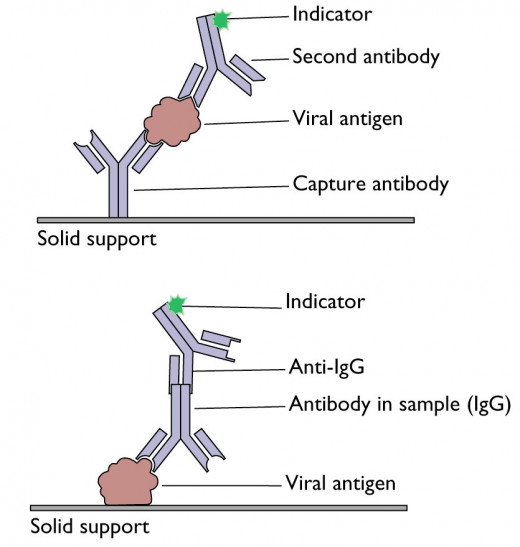
Molecular diagnosis:-
It is often a big challenge for doctors to identify a disease before treating it. The sooner the disease is identified, the faster and accurate treatment possibilities also increase. The use of conventional methods for diagnosis of disease such as serum, urine analysis, etc; takes a lot of time, which takes time to identify the disease. To avoid this problem, scientists developed several techniques and inventions. Out of which I will talk about three techniques. The first technique is PCR (Polymerase Chain Reaction). This technique has proved to be very helpful in the early detection of disease by amplifying the nucleic acid of pathogens. In fact, due to the lower concentration of pathogens, their examination by blood is impossible. But through PCR, we can amplify the nucleic acid of the pathogens and examine them even if their concentration is quite small. The PCR technique is also used to detect HIV, genetic mutations in suspected cancer patients, and to test for genetic disorders.
The second technique is recombinant DNA technology. In this technique, single-stranded DNA or RNA is tagged with a radioactive probe. The probe is then allowed to hybridise so that the complementary DNA in a clone of cells. Then those cells are detected by autoradiography. Cells that have been mutated are not visible on the photographic film because the probes are not compliant with mutated genes.
ELISA is based on the principle of antigen-antibody interaction. Infection by a pathogen can be detected by the presence of antigens(proteins, glycoproteins, etc.)or by detecting the antibodies synthesized against the pathogen.
So that's it for today's article. So today we learn about how biotechnology and recombinant DNA technology change the world of medical science. We saw many different techniques introduced by the scientist for human welfare. I hope you like my article. There is one request if you really like my article then please describe your emotion on the comment section. For any suggestion and query related to this topic, just mention it in a comment I will definitely answer all your doubts. Stay with me because I will keep bringing you such scientific articles. See you in the next article, then be happy forever, keep smiling, and keep reading my articles.
© 2020 Manu Saraswat

